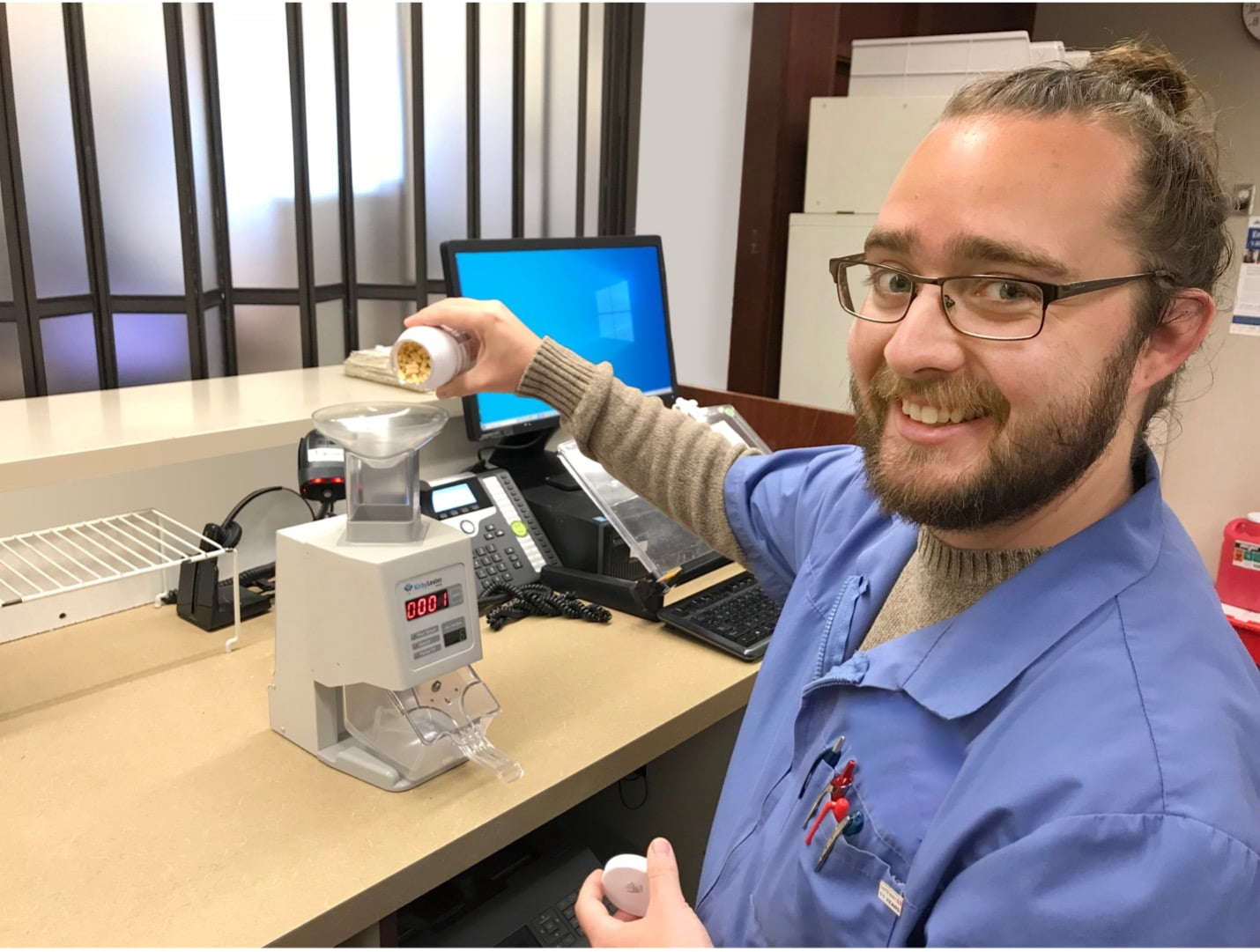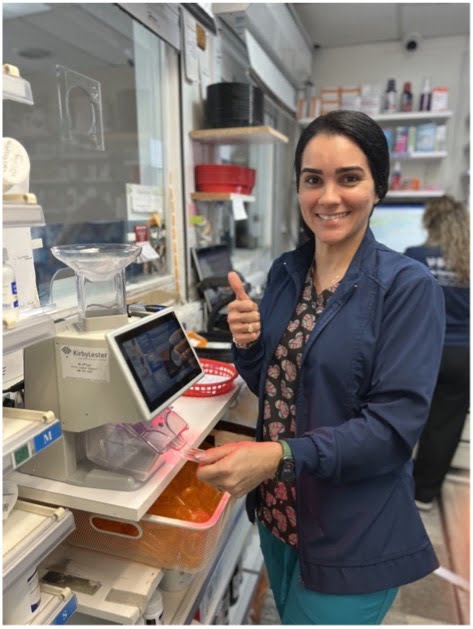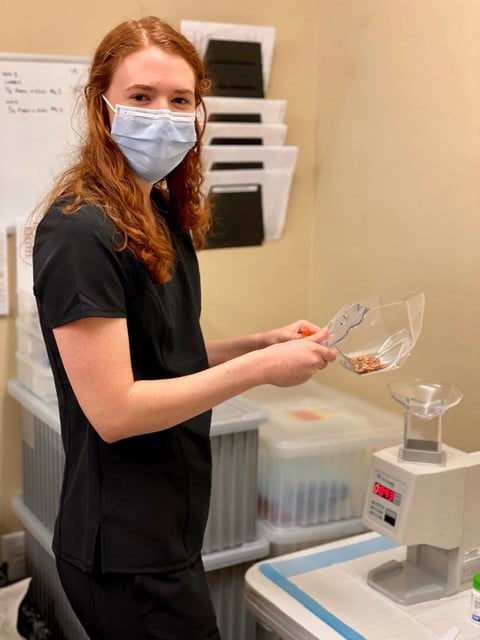
Community pharmacies provide essential patient services, from medication guidance and point-of-care testing to immunizations and self-care recommendations. With the direct contact pharmacies have with the community, patient trust and enhanced customer service are vital.
However, pharmacists struggle with increased demand for medication services while hampered by endless challenges like reimbursements, supply chain disruption, and pharmacy staffing issues. These challenges can lead to poor performance, frustrated patients, and competitive disadvantages if left unchecked.
No matter where a pharmacy is located, competition can be fierce, and it’s easy to lose your competitive advantage quickly. One solution is to move your pharmacy practice model from a prescription-filling focus to patient-centered care. With innovative services that meet unique patient needs, your pharmacy becomes a service provider rather than one of many options on the block. That, of course, requires dedicated, talented team members. The pharmacy industry is in an incredible transformational period in filling this void with the rising tide of pharmacy technician significance and value.
Techs have unique skills and can take on supportive or leadership roles, assuming technical, management, and operational duties and patient care. With both administrative and patient contact, a technician has the insights to identify growth opportunities and improve customer service.

For many practical reasons, patients today have more reasons and opportunities to utilize their community pharmacy as a service destination. However, that increases the workload for community pharmacists.
Pharmacy technicians become critical in pharmacy management and leadership roles, patient health initiatives, and easing the workload of pharmacists. The role has evolved from administrative tasks, such as counting medications, entering prescriptions, labeling, and billing, and has changed toward more clinical activities.
Depending on state regulations and with supervision from a licensed pharmacist, many pharmacy techs now compound medications, purchase and manage supplies, administer vaccinations, supervise or manage other technicians, implement community outreach programs, and assist with medication history and therapy review.
Unfortunately, the labor shortage affecting most industries has also reached pharmacies. Changes in working environments resulting from the COVID-19 pandemic, increased workload, and burnout have led to pharmacy staff shortages. So, as vital pharmacy technicians are proving to be, their value is unfulfilled when a pharmacy is perpetually short-handed.
A 2022 survey found that 70% of pharmacists had trouble filling positions. This has often caused disrupted service hours, increased wait times, and delayed patient care. The risk of error also increases with tightly stretched pharmacy staff. Many pharmacies use the same solution to address staff shortages and the associated problems: investing in pharmacy automation, leveraging technology to support existing pharmacy staff, and streamlining technician workflows. The goal is to equip staff with tools that ease the workload and labor constraints and improve the overall practice. Ultimately, providing technicians with the tools to succeed is a win-win for the staff and management.
For instance, the Kirby Lester KL1Plus is a multi-use tool that saves technicians time, steps, and prevents accidental Rx filling (which also negatively affects the managing pharmacist). Technicians using the KL1Plus to fill prescriptions are found to be faster, more accurate, and have higher job satisfaction than technicians in an all-manual pharmacy operation.
While pharmacists are the undisputed medication experts and leaders in a community pharmacy, the new generation of technicians quickly proves they can serve as willing, able, and talented lieutenants.

Prescription processing is more than just reading a prescription and filling it. It involves obtaining and reviewing a patient’s medication history for drug safety, potential interactions, and accuracy.
Community pharmacies may receive high prescription volumes, especially in rural towns where health centers and acute facilities don’t have internal clinical pharmacy services. Pharmacy technicians can take on some of these roles, assisting with medication and medical history review while filling prescriptions and, where allowed, checking other technicians for accuracy.
For example, techs can participate in patient intake at the prescription drop-off point or over the phone and perform a thorough review during dispensing. Technicians can optimize and review automated prescription fills and robotic processes to ensure prescriptions are valid, medications are accurate, and documentation is compliant.
According to one study, pharmacists also gain substantial time when technicians complete Rx filling checks—an equivalent of 23 days a year. With that staggering amount of time savings, techs are increasing efficiency in the workflow and freeing pharmacists to focus on patients and pharmacy management. Patients get faster prescription filling, shorter wait times, and more engagement at the checkout.
Pharmacy technicians are assuming more patient-facing duties as roles evolve, including education and counseling. Depending on the state, techs may administer vaccinations or assist in immunization programs. Part of the vaccination process involves educating patients on the risks and benefits of a vaccine, the side effects to expect, and how to treat those side effects at home.
Vaccination programs are essential for public health and may be a critical revenue and service stream within a community pharmacy. Technicians can help execute these programs and provide direct patient education, care, and assistance, creating accessible health initiatives for the community. Additionally, advanced technicians with medication therapy management certifications can guide patients on their medication regimens. While only pharmacists may advise patients on medications and disease management, qualified technicians can guide patients about supplements and over-the-counter drugs.
According to reports, healthcare providers don’t have enough time in the day to perform job duties. Physicians typically spend less than 20 minutes with patients in appointments and need about 27 hours per day to provide adequate care. Pharmacists report similar time constraints.
Technicians can step in to bridge these gaps and help identify key health factors. With this support, pharmacies can ensure patients gain access to medications and critical information that promotes safe use and health goals.
Pharmacy technicians have a unique perspective. With insight into systems, technology, quality, and patient needs, techs are positioned to aid pharmacy management in identifying growth opportunities and spot deficiencies.
When management gives pharmacy technicians the tools, guidance, and freedom to take on new initiatives, a pharmacy can truly innovate and flourish. Many technicians create award-winning strategies that advance operations or contribute to better patient outcomes.
Techs may also help identify or research new revenue streams for services they can assist with or sometimes even execute independently, such as compounding services, low-risk point-of-care testing, or investigational drug program assistance. As pharmacist extenders, techs are affordable pharmacy labor and promote pharmacy reach and growth. The result is additional community value at a sustainable cost, leading to better patient care.
End-to-end pharmacy automation from Capsa Healthcare helps fill staffing gaps and provides incentive and motivation for a busy, talented pharmacy technician team. With less time spent on administrative tasks, your staff can focus on expanding their talents and value while providing greater patient care and revenue-generating activities.
Capsa Healthcare salutes the dedicated pharmacy technicians who play a vital role in healthcare, ensuring safe and efficient medication management. Thank you for your commitment to patient care.